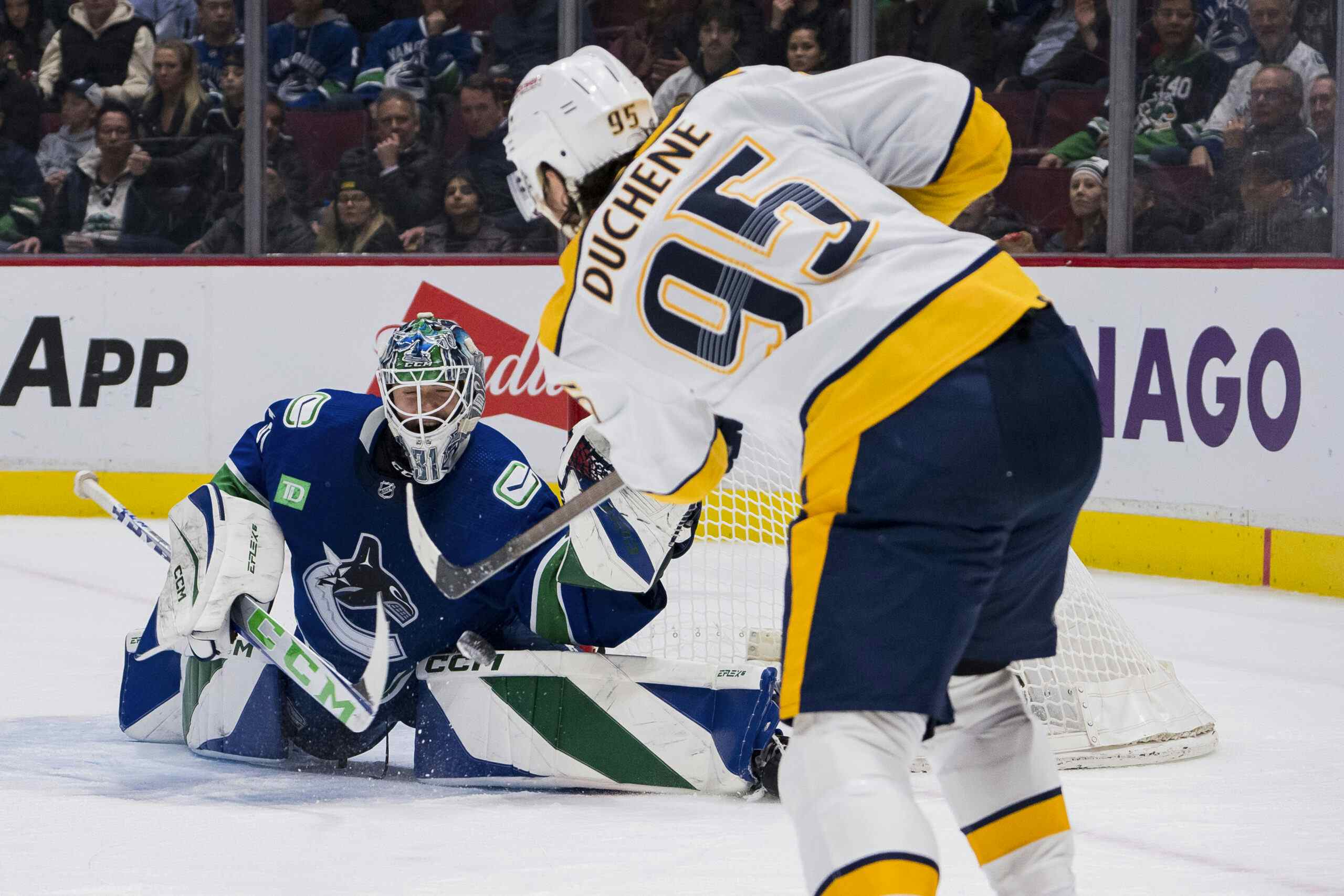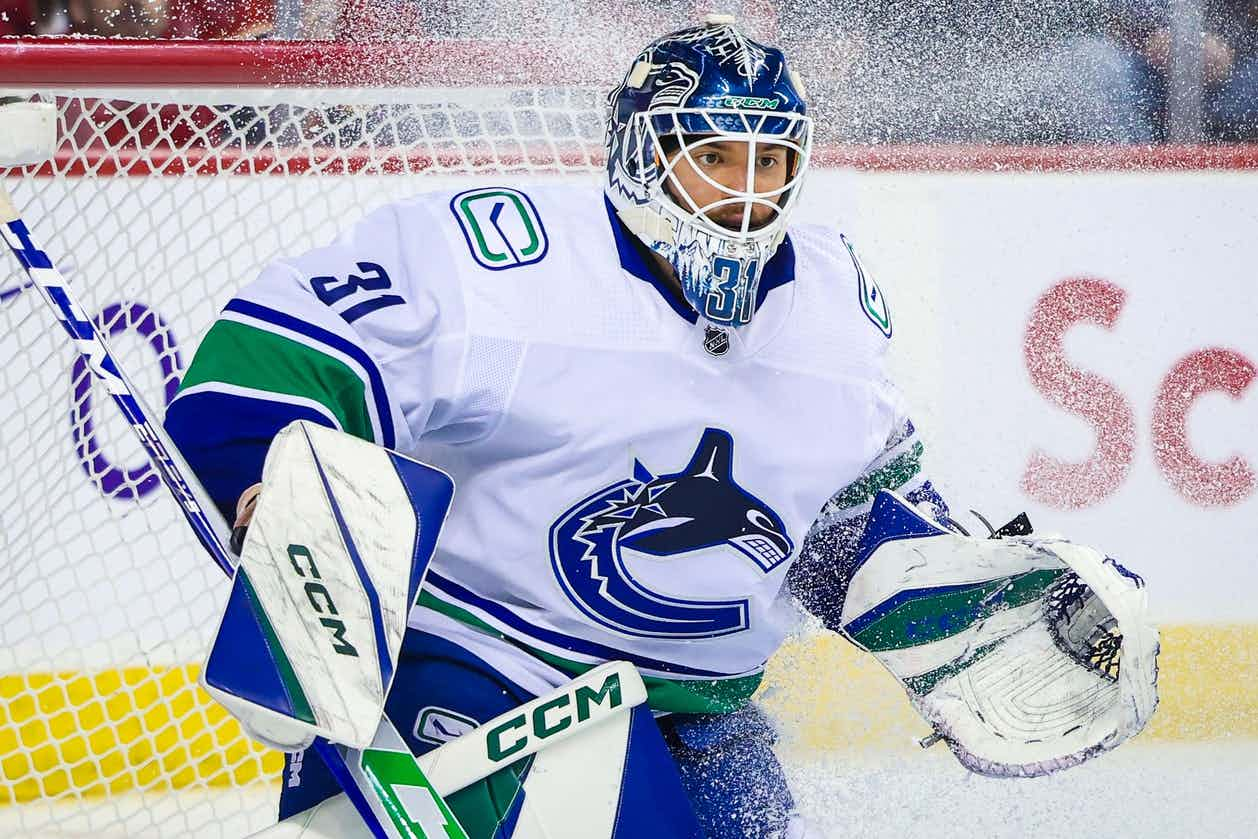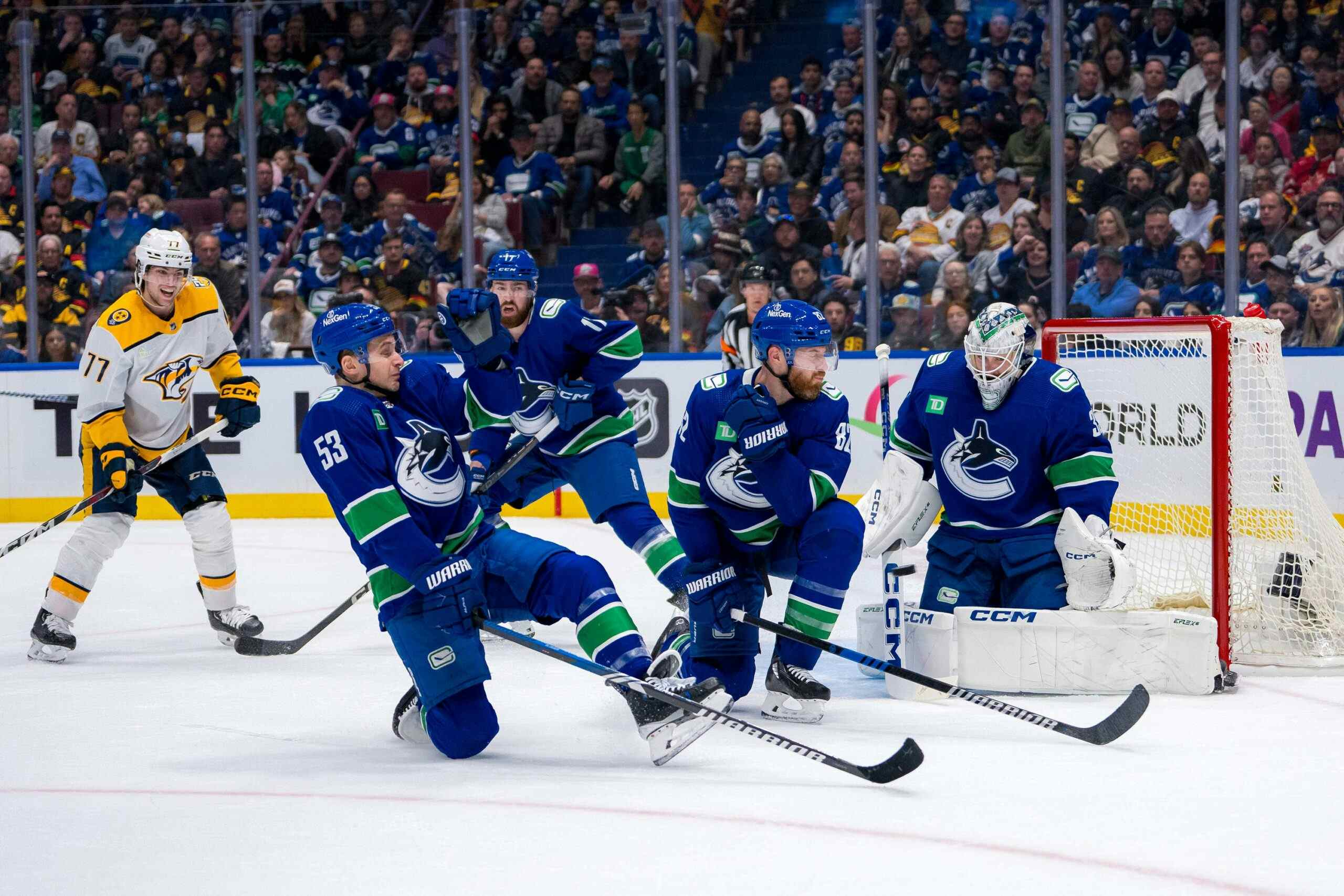Derek Roy Trade Reax

Derek Roy, then a Sabres forward, hauls down an unidentified Canuck (I believe Matt Pettinger) back in the day.
Canucks General Manager Mike Gillis went out on Trade Deadlines Eve and acquired Derek Roy from the Dallas Stars in exchange for prospect Kevin Connauton and Vancouver’s second round pick in the 2013 NHL Draft.
You can read our take on the trade and the subsequent re-assignment of Jordan Schroeder, but let’s round up what other writers and reporters are saying about the deal.
Laurence Gilman spoke about the deal on the Team 1040 saying that on Vancouver’s depth chart "Derek Roy is going to come in as our third-line centre." He elaborated on Roy’s potential impact on the club (transcription my own):
"We’re not necessarily a conventional team in the way that we’ve been built or play the game when healthy. We play uptempo with defenseman joining the rush. In Derek’s case he can take faceoffs, he plays 20 minutes a game, he’s a player who is at times has been a thirty goal scorer and he brings a dimension to the game. Aside from what he’s bringing on the ice, it’ll provide an emotional lift for our players. They know based, on what’s gone on with the team, that we’re a fertile team but we’ve been depleted.
Scott Cullen thinks Derek Roy will be a suitable third-line centre:
What does stand out, in some respects, is that Roy started a lot of shifts in the defensive zone, faced a higher-calibre of competition and still generated a positive shot differential with the Stars, so he was moving the puck the right way, even if his point total hasn’t been up to his previous standards.In Vancouver, Roy moves into a gaping hole on the second line, at least as long as Ryan Kesler remains sidelined. Even once Kesler returns, Roy can figure in a prominent offensive role, boosting the productivity of Canucks wingers Mason Raymond and Jannik Hansen, the supporting cast behind the Sedins in the Vancouver offence.That Roy handled a higher proportion of defensive zone starts in Dallas this year probably held some appeal for the Canucks, since Vancouver has notoriously given the Sedins that majority of starts in the offensive zone when possible. Having a centre capable of handling shifts that start in the defensive zone, particularly with Kesler sidelined, was a priority for a playoff team.
A couple of weeks ago, Jeff Angus made a related point about Roy’s two-way effectiveness:
Roy has been very solid in the role that Dallas created for him. He is starting 45% of his shifts in the offensive zone, while Benn is at 54%. Roy’s defensive acumen (he won’t ever win a Selke, but he knows his way around his own zone) has enabled Glen Gulutzan the luxury of keeping Benn off the ice for defensive zone faceoffs. Little things like this matter a lot in the long run. Roy’s defensively ability has also allowed the Stars to shelter Eakin a little bit. And that is never a bad thing for a young player learning the ropes in the best league on the planet.
Harrison Mooney notes that Mike Gillis has deviated from his usual modus operandi with the timing of this deal:
Over the course of his tenure as Canucks GM, Mike Gillis has earned a reputation as an eleventh hour dealer. Typically, the Canucks go completely quiet right up until the deadline appears to have passed, and then, just as Vancouver hockey fans begin to pout, it’s announced that Gillis’s paperwork has just beaten the buzzer.Not so this time around, where it would appear Gillis’s New Year’s Resolution was to stop leaving things until the last second. A day in advance of the trade deadline, he’s made what may be his big splash: the Canucks have acquired centre Derek Roy and his expiring $4M contract from the Dallas Stars in exchange for a 2nd round pick and prospect Kevin Connauton.
Jason Botchford focuses in on Derek Roy’s medium-term future with the club:
Hey, it only took 10 months [for the Canucks to finally get their centre].They don’t have the same luxury of waiting that long for their next move. And the Canucks have to have a next move.Roy is smallish, gritty, two-way, playmaking centre who can take care of a second line. He’s also expected to be a rental. Reports abound he was asking for as much as $5-$6 million a year for five years to stick around in Dallas.
Elliott Pap transcribes Mike Gillis’ reasons for chasing Derek Roy:
“I liked a lot of things about the Derek Roy trade,” explained the GM. “I like the fact he’s a winner and an MVP at the Memorial Cup (2003). I like his points per game average. I like his playmaking ability and the opportunity to add another layer of offence.“It also gives us more flexibility. Instead of being focused on that one piece of the puzzle, we can now look at other areas we’d like to strengthen, and other possibilities and maybe three-way deals or something along those lines. We’re still looking to be active.”
Greg Wyshynski cracks wise and focuses on Roy’s struggles in the face-off dot:
In Roy, the Canucks get a player tailormade for the second-line center role and one that’s had an strong season for the Dallas Stars – in, let’s remember, a contract year. He has 22 points in 30 games, although only four of them are goals. After a strong year on draws on 2011-12, Roy is back to being around a 46-percenter in the circle.Vancouver was seen as a team “one proven center short,” so naturally they traded for a short proven center. (/rim shot).
On Kevin Connauton, Allen Tung singles out these tweets from Canucks beat writers Brad Ziemer and Ben Kuzma, who contextualize Vancouver’s decision to include the young defender in the Roy deal:
I tend to doubt that the Canucks were using plus/minus to evaluate Connauton’s defensive play. I do however buy that they’d "soured" on him. Kuzma’s reply:
Finally, Tony Gallagher sees this deal as representative of a monumental strategic shift for the Canucks, which honestly I’m not really sure I buy but it’s interesting:
Finally the Vancouver Canucks have looked at the way they’ve been playing and realized it is entirely the wrong approach.With their trade with the Dallas Stars, which brings them Derek Roy for their third-line centre role, it turns the team back into an offensive handful for any team playing them and, with their back end and goaltending, it almost certainly vaults them into competition to come out of the Western Conference this year.Roy has speed and offensive ability and, considering that last year they went with Sammy Pahlsson in this position, this marks a real change in approach. Roy gives them a second centre for the second power-play unit and, if they change their style as this move indicates, it will mean they will be entirely likely to draw more penalties than they have been.
Have your say in the comments. What are your thoughts on the Roy trade, and what do you think it means for the team going forward?
Recent articles from Thomas Drance





